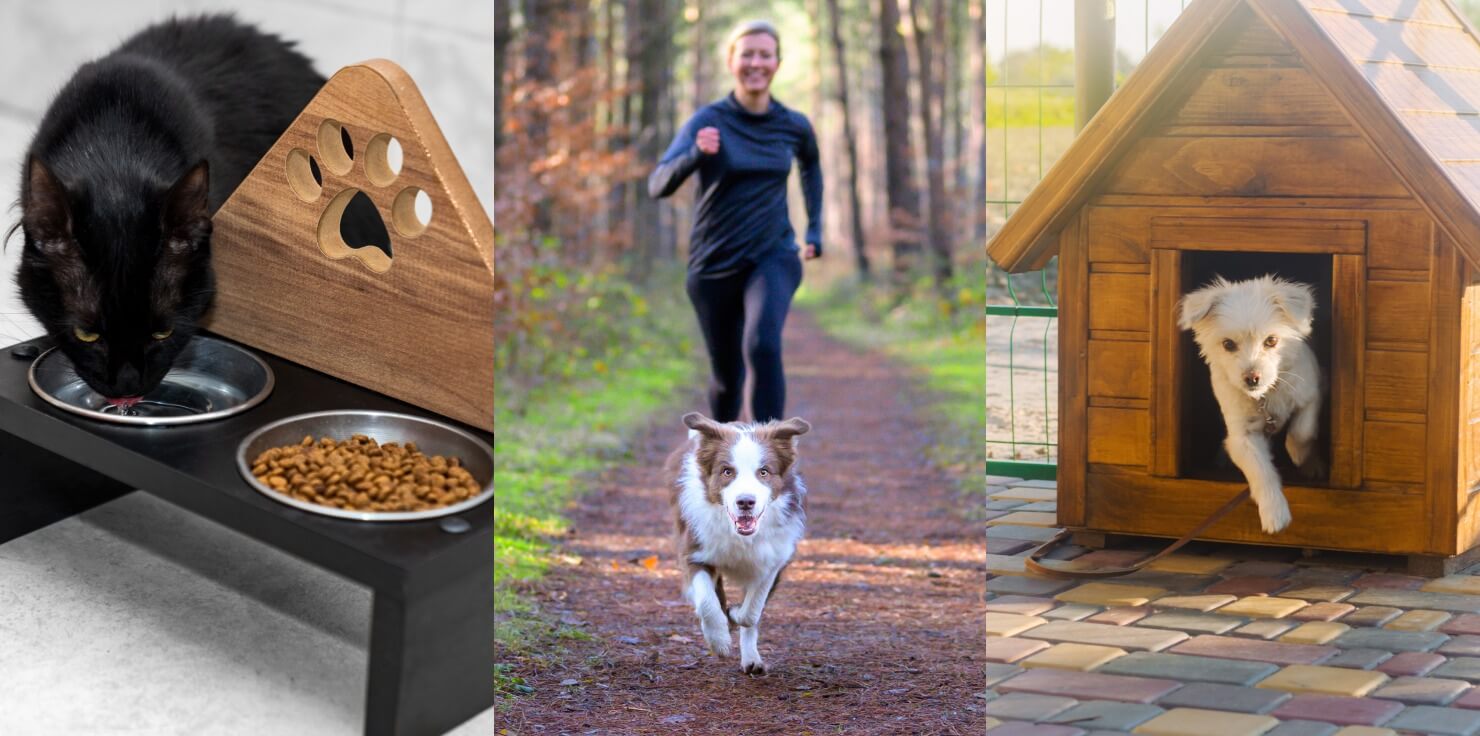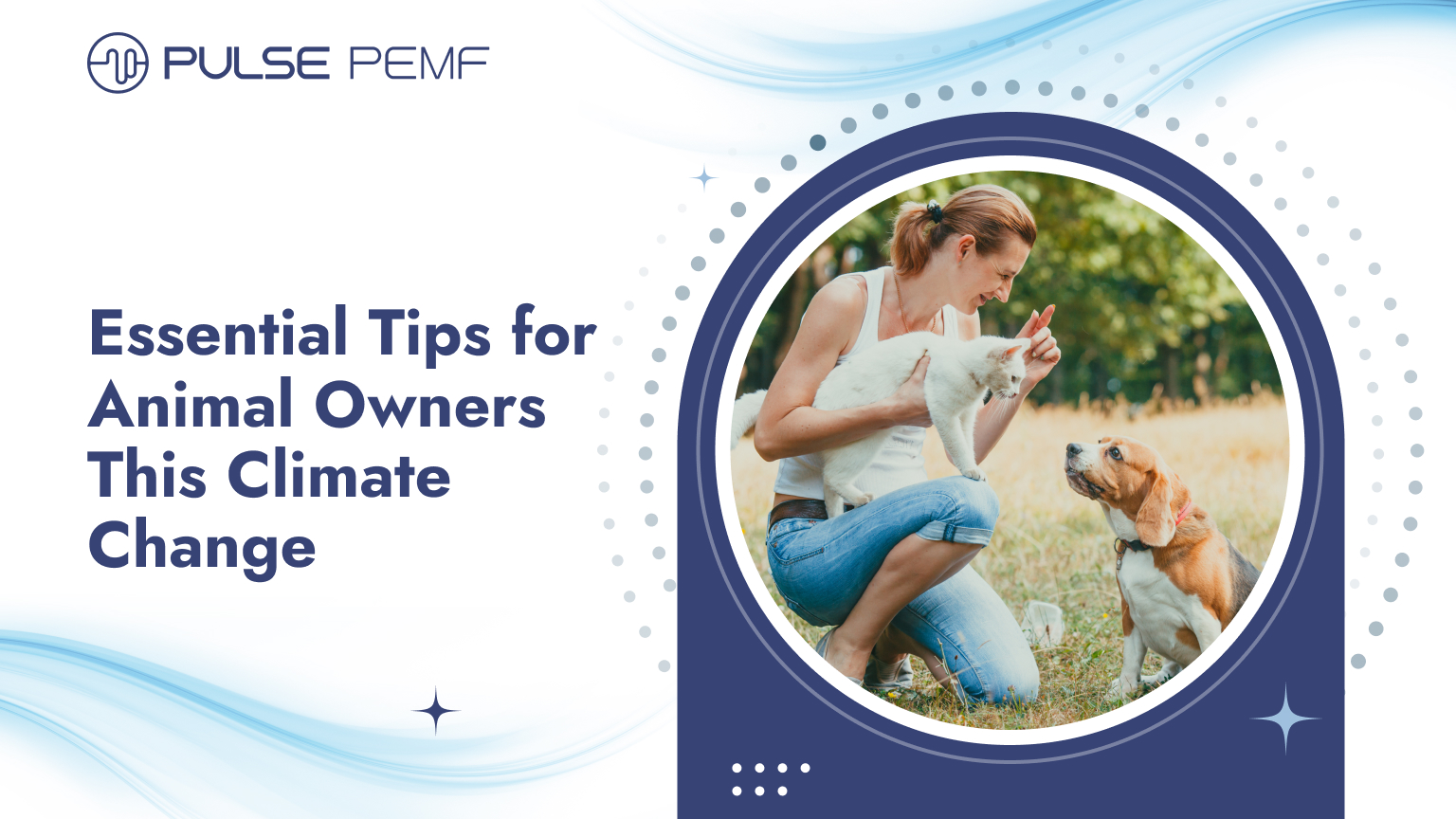Climate change is heating up our planet faster than ever before. This means changes in weather patterns, rising sea levels, and more extreme weather events. These changes are having a significant impact on animals and their environments.
As an animal owner, it’s important to be proactive and take steps to protect your pets and livestock from the growing threats of climate change. This blog will provide you with essential tips to help you ensure the well-being of your animals during these challenging times.
Understanding the Impact of Climate Change on Animals
Changes in Weather Patterns
Climate change is causing a significant shift in weather patterns, leading to more extreme events like heat waves, storms, and droughts. These events can have devastating consequences for animals. For instance, heatwaves can cause heatstroke, dehydration, and even death in pets and livestock. Severe storms can lead to injuries, displacement, and separation from their owners. Droughts can result in a shortage of food and water, putting animals at risk of starvation and thirst.
Rising temperatures can also alter animal behavior and physiology. For example, some animals may become more aggressive or anxious due to stress from heat and discomfort. Additionally, temperature changes can affect their reproductive cycles and overall health.
Alterations in Habitat and Food Sources
Climate change is also disrupting ecosystems, leading to changes in food availability and habitat quality. As temperatures rise and weather patterns shift, many plant species may become less abundant or disappear altogether. This can have a cascading effect on the animals that rely on these plants for food. For example, if a particular type of grass becomes less common due to drought, herbivores that depend on it may struggle to find enough to eat.
Increased Risk of Disease
Climate change is creating conditions that are more favorable for the spread of diseases in animals. Warmer temperatures can accelerate the life cycles of disease-carrying insects like ticks and mosquitoes, increasing the risk of transmission. Additionally, changes in rainfall patterns can create breeding grounds for disease-causing organisms.
These factors combined can lead to outbreaks of diseases such as Lyme disease, West Nile virus, and heartworm. It’s essential for animal owners to be aware of these risks and take preventative measures to protect their pets.
Preparing for Extreme Weather Events
Creating a Disaster Preparedness Plan

When it comes to disaster preparedness, it’s crucial to include your animals in your plans. A well-thought-out disaster plan can help ensure the safety and well-being of your pets and livestock during extreme weather events.
Key components of an effective disaster preparedness plan include:
- Evacuation routes: Identify safe escape routes for both you and your animals in case of emergencies.
- Emergency kits: Assemble a kit containing essential supplies for your animals, such as food, water, medications, first aid supplies, and identification tags.
- Temporary shelter: Determine a safe location where you and your animals can stay in case of evacuation.
- Contact information: Keep a list of emergency contacts, including veterinarians, animal shelters, and local authorities.
Protecting Animals During Heatwaves
Heatwaves can be particularly dangerous for animals, especially those that are sensitive to heat or have underlying health conditions. Here are some tips for keeping your animals cool and hydrated:
- Provide plenty of water: Ensure your animals have access to fresh, clean water at all times.
- Find shade: Seek out shaded areas or use canopies or umbrellas to protect your animals from direct sunlight.
- Limit exercise: Limit outdoor activities during the hottest parts of the day.
- Never leave animals in parked cars: Even on mild days, the interior of a car can quickly become dangerously hot.
Signs of heat stress in animals include excessive panting, drooling, lethargy, vomiting, and diarrhea. If you notice any of these symptoms, move your animal to a cool, shaded area and provide plenty of water. If the symptoms worsen, seek veterinary attention immediately.
Safeguarding Animals During Storms and Floods
Storms and floods can pose significant risks to animals. Here are some strategies for protecting your pets and livestock during these events:
- Secure outdoor enclosures: Ensure that your animals’ outdoor enclosures are sturdy and can withstand strong winds and heavy rain.
- Provide shelter: If possible, move your animals to a safe indoor location during severe weather.
- Identify safe zones: Know the location of high ground or evacuation routes in case of flooding.
- Microchip your animals: Microchipping can help reunite lost animals with their owners.
Adapting Animal Care Routines

Adjusting Feeding and Hydration Practices
As climate change alters food availability and nutritional needs, it’s essential to adjust your animals’ feeding routines accordingly. Monitor the quality and quantity of available food sources and make necessary adjustments to ensure adequate nutrition. Additionally, providing access to clean, fresh water is crucial, especially during hot and dry periods. Consider using automatic waterers or refilling water bowls frequently to maintain a consistent supply.
Modifying Exercise and Activity Levels
Adapting exercise routines to avoid overexertion during extreme weather is essential. Avoid strenuous activities during the hottest parts of the day and choose cooler, shaded areas for exercise. If outdoor activities are limited, provide alternative indoor activities to keep your animals mentally and physically stimulated.
Enhancing Shelter and Housing
Upgrading animal shelters to withstand extreme weather is vital. Ensure that your animals have access to a well-insulated and ventilated shelter that provides protection from both heat and cold. Consider adding insulation, providing shade, and improving ventilation to create a comfortable and safe environment for your pets.
Monitoring Health and Well-being
Regular Health Check-Ups
Frequent veterinary check-ups are essential to monitor your animals for signs of climate-related stress. Your veterinarian can assess their overall health, identify any potential issues, and provide appropriate recommendations. Vaccinations and preventative care are also crucial to protect your animals from climate-related diseases.
Recognizing Signs of Stress and Illness
It’s important to be able to identify early signs of stress, illness, or discomfort in your animals. Look for changes in behavior, such as increased aggression, anxiety, or lethargy. Pay attention to physical symptoms like excessive panting, drooling, vomiting, or diarrhea. If you notice any concerning signs, consult your veterinarian promptly. If your animal shows symptoms of heat stress, dehydration, or other climate-related issues, take immediate steps to provide relief and seek veterinary attention if necessary.
Addressing Climate-Related Health Concerns
Vector-Borne Diseases: Climate change is contributing to the spread of vector-borne diseases like Lyme disease and heartworm. Protect your animals by using preventative medications, avoiding tick-infested areas, and conducting regular checks for ticks and fleas.
Air Quality: Air pollution can negatively impact pet health. Limit exposure to outdoor air pollution by keeping your animals indoors during periods of poor air quality. Consider using air purifiers to improve indoor air quality.
Mental Health: Climate change can affect pet behavior and emotional well-being. Provide plenty of mental stimulation, exercise, and social interaction to help your animals cope with stress. If you notice significant changes in behavior, consult with a veterinarian or animal behaviorist.
Long-Term Strategies for Animal Care

Sustainable Practices in Animal Care
Adopting sustainable practices in animal care can help mitigate the effects of climate change. Consider sustainable farming, gardening, and animal husbandry methods that minimize environmental impact. Reduce your carbon footprint by making eco-friendly choices, such as using renewable energy sources, reducing waste, and supporting local businesses.
Supporting Conservation and Reforestation Efforts
Engaging in conservation initiatives can help protect animal habitats and biodiversity. Support organizations working to preserve natural habitats, protect endangered species, and promote sustainable land use practices. Reforestation and habitat restoration play a crucial role in mitigating the effects of climate change on animals. Consider participating in tree-planting initiatives or supporting organizations involved in habitat restoration projects.
Conclusion
By taking proactive steps to prepare for and adapt to climate change, you can help ensure the well-being of your animals.
Remember, it’s essential to research local resources and emergency plans for pets in your area. By being informed and prepared, you can help protect your animals and contribute to a more sustainable future for all.












